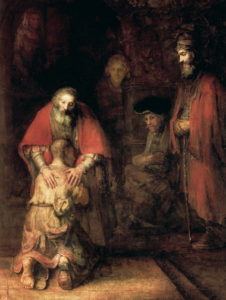CAN WE TRUST THE BIBLE? – THE GOSPEL OF LUKE
There are five crucial questions when we consider how trustworthy the gospel of Luke is:
1 Who wrote it?
2 How near to the events was it written?
3 Does the author intend to be truthful?
4 Is he actually truthful or does he let his prejudices get in the way.
5 What do other sources say?
THE CASE OF LUKE – Part 2
3 Luke claims to be reliable: “Since many have undertaken to set down an orderly account of the events that have been fulfilled among us, just as they were handed on to us by those who from the beginning were eyewitnesses and servants of the word, I too decided, after having investigated everything carefully from the very first, to write an orderly account for you, most excellent Theophilus…
So, clearly, Luke did mean to be truthful. Did he succeed?
4 Luke himself says that his gospel is a composite account. So there are two questions
regarding his reliability. Is he faithful to his sources? And are his sources reliable?
Biblical scholars put Luke’s sources into three categories: Mark, Q (for the German word Quelle, meaning source) for the material which he shares with Matthew , and L for the material that only comes in Luke. In fact, there are more bits than these. There are sources which have been written down, I will call Q1, these are identical between Luke and Matthew. Then there are sayings handed down by word of mouth, Q2, which are similar between Luke and Matthew but not identical. Then there are three types of Luke’s special material: parables (L1), human stories (L2) and the birth narratives (L3).
Mark: Luke faithfully records what he has found in Mark. He probably found Mark after he had written the rest of his gospel, and slotted it in in a series of large chunks, e.g. 4.31 – 6.16; 8.4 – 9.50; 19.28 – 23.54. He does leave out things he finds unhelpful, like Jesus walking on water, the second food miracle, the feeding of the four thousand, the Syro-Phoenician woman and the cursing of the fig tree outside Jerusalem.
He has his own account of the trial and crucifixion, which he slots into Mark’s account.
Q1 These are sayings of John the Baptist and of Jesus, and Jesus’ temptations, which presumably circulated in Greek through the early Christian communities, because they are verbally identical between Luke and Matthew. The setting had to be provided by the gospel writer, so when John the Baptist says “You brood of vipers! Who warned you to flee from the wrath to come?”, in Luke he addresses the crowd, in Matthew he is talking to the Pharisees and Sadducees.
Q2 In Luke there are sayings that reflect an earlier, less churchy version, than those in Matthew. Luke’s Beatitude’s start, “Blessed are you who are poor, for yours is the kingdom of God.” In Matthew they are spiritualised as “Blessed are the poor in spirit, for theirs is the kingdom of heaven” The Lord’s prayer is much shorter: 38 words (in English) in Luke, 50 words in Matthew. There are three parables which the two gospels share, in each case Luke preserves an older version. His faithfulness as a recorder is highlighted when he actually misses the point. Introducing the parable of the persistent widow and the unjust judge, (18.2-8) Luke says it is to show how we need ”to pray always and not lose heart”, probably the opposite of what Jesus meant!
L1 Luke alone records some amazing parables, without which the whole of Western culture would be significantly poorer: the Good Samaritan, the Prodigal Son, the Pharisee and the Tax Collector, the Rich Fool and the Rich Man and Lazarus.
L2 Luke loves human interest stories, which he always records quite soberly. The classic one is when Jesus as a 12 year old he got left behind in Jerusalem. (Shades of “Home Alone”!) Others are the call of Peter (5.1-11), healing of the Centurion’s servant, “he built our synagogue” (7.1-10), the woman who anointed his feet in a Pharisee’s house (7.36-50), the wonderful story of Zacchaeus (19.1-10), and the disciples on the road to Emmaus (24.13-35)
L3 The first two chapters are different. They have three special characteristics:
a) The human interest element: Luke is just as interested in the parents of John the Baptist as he is in the parents of Jesus
b) The Jewish element. Luke is fascinated by the Jewish faith. The Temple plays a big part in these chapters, and he quotes Malachi, Exodus and Leviticus explicitly.
c) He also writes as a Greek historian. It was normal practice in the Greek world to put speeches into the mouths of key people, such as they might have spoken at the time. I believe that this what Luke has done in the Magnificat (1.46-55), Benedictus (1.68-79) and perhaps the Nunc Dimittis (2.29-32). But it absolutely does not disqualify him from being a reliable and trustworthy writer.
5 What do other sources say? Apart for Mark, there are no other sources against which to check Luke’s account, but it is a good litmus test which Luke passes well.
In summary: A reliable and careful secondary account, with some unique parables and stories.
